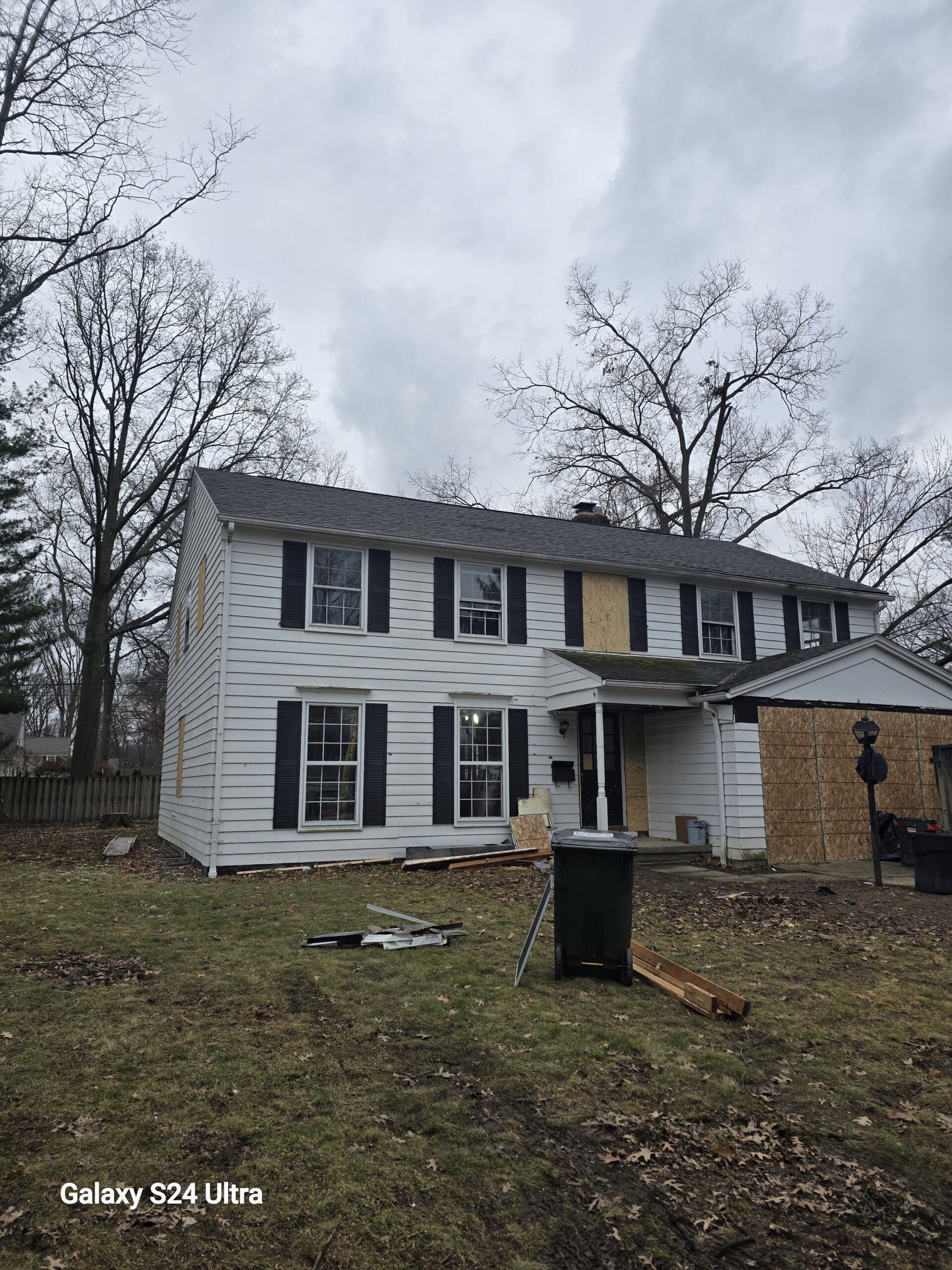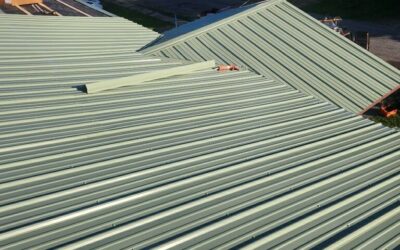What is the Minimum Roof Pitch for Asphalt Shingles?
Asphalt shingles are one of the most popular roofing materials in the U.S., offering durability, affordability, and aesthetic appeal. However, when installing asphalt shingles, understanding the minimum roof pitch is crucial to ensure proper water drainage and prevent leaks.
At S&K Construction And Remodeling LLC, we frequently receive questions from homeowners about the appropriate slope for their roofs. This guide will explore the minimum roof pitch required for asphalt shingles, factors influencing pitch selection, and why choosing the right pitch is essential for long-term performance.
What is Roof Pitch?
Roof pitch, also known as roof slope, is the angle of the roof compared to a horizontal surface. It is expressed as a ratio of vertical rise to horizontal run, typically measured in inches per foot.
For example, a 4:12 pitch means the roof rises 4 inches for every 12 inches (one foot) of horizontal distance. Roof pitch affects not only the appearance of a home but also its ability to shed water and withstand environmental conditions.
What is the Minimum Roof Pitch for Asphalt Shingles?
The minimum recommended roof pitch for asphalt shingles is 2:12. This means that for every 12 inches of horizontal run, the roof must rise at least 2 inches. However, roofs with a pitch between 2:12 and 4:12 require special underlayment installation to ensure proper waterproofing.
Shingle Manufacturer Guidelines
Most major asphalt shingle manufacturers, including Owens Corning, GAF, and CertainTeed, adhere to these guidelines:
- Less than 2:12 – Not recommended for asphalt shingles; requires alternative roofing materials like metal, TPO, or EPDM.
- 2:12 to 4:12 – Asphalt shingles can be installed with an enhanced waterproof underlayment, typically a double layer of felt or a self-adhering membrane.
- 4:12 and above – Standard installation practices apply without additional waterproofing measures.
Why Roof Pitch Matters for Asphalt Shingles
Roof pitch plays a critical role in determining a roof’s ability to manage water runoff, prevent leaks, and maintain structural integrity. Here’s why it matters:
1. Proper Water Drainage
Steeper roofs shed water more efficiently, reducing the risk of pooling or water infiltration. Shallow roofs (below 2:12) may allow water to seep under shingles, leading to moisture damage, mold, and structural issues.
2. Shingle Longevity
Shingles on low-slope roofs experience more prolonged exposure to standing water and UV rays, which can lead to faster deterioration compared to shingles on steeper roofs.
3. Prevention of Ice Dams
In colder climates, a steeper pitch helps prevent ice dams, which form when melted snow refreezes at the roof edge. Ice dams can force water under shingles, leading to leaks and damage.
4. Manufacturer Warranty Compliance
Shingle manufacturers specify minimum pitch requirements in their warranties. Installing shingles on a roof that is too shallow can void warranties, leaving homeowners without coverage if issues arise.
Best Practices for Installing Asphalt Shingles on Low-Slope Roofs
If you’re installing asphalt shingles on a low-pitch roof (2:12 to 4:12), follow these best practices to ensure durability and water resistance:
1. Use a Waterproof Underlayment
For roof pitches between 2:12 and 4:12, a double layer of asphalt-saturated felt or a self-adhering waterproof membrane (such as ice and water shield) is required. This added protection prevents moisture infiltration.
2. Ensure Proper Ventilation
Proper attic ventilation reduces moisture buildup and helps extend the life of shingles. Ridge vents, soffit vents, or gable vents should be installed to promote air circulation.
3. Maintain Regular Roof Inspections
Low-slope roofs are more susceptible to debris buildup and water pooling. Regular inspections help identify and address potential problems before they become severe.
4. Consider Alternative Roofing Materials
If your roof pitch is below 2:12, asphalt shingles are not suitable. Instead, consider using materials such as:
- TPO (Thermoplastic Polyolefin) Roofing – Common in flat roofing applications.
- EPDM Rubber Roofing – Ideal for very low-slope or flat roofs.
- Standing Seam Metal Roofing – Provides superior water shedding and durability.
Calculating Your Roof Pitch
If you’re unsure of your roof pitch, you can measure it using these methods:
1. Using a Level and Tape Measure
- Place a 24-inch level horizontally on the roof surface.
- Measure the vertical rise from the 12-inch mark on the level to the roof surface.
- The measurement in inches is your roof pitch (e.g., 3 inches = 3:12 pitch).
2. Using a Roof Pitch App
Several mobile apps allow homeowners and contractors to measure roof pitch using a smartphone’s built-in gyroscope.
3. Checking Building Plans
If your home’s original blueprints or building plans are available, they often specify the roof pitch.
Minimum Roof Pitch Requirements for Other Roofing Materials
If asphalt shingles are not an option due to a low pitch, consider alternative roofing materials with the following minimum pitch requirements:
| Roofing Material | Minimum Pitch |
|---|---|
| Asphalt Shingles | 2:12 (with special underlayment) |
| Metal Roofing | 1:12 (standing seam), 3:12 (corrugated) |
| TPO or EPDM | Flat to 1:12 |
| Rolled Roofing | 1:12 |
| Clay or Concrete Tile | 4:12 |
| Wood Shakes or Shingles | 4:12 |
Choosing the Right Roofing System for Your Home
Selecting the appropriate roofing system depends on several factors:
- Roof pitch
- Climate and weather conditions
- Budget and maintenance requirements
- Aesthetic preferences
If your home has a low-pitch roof, S&K Construction And Remodeling LLC can help determine the best solution for long-lasting performance and protection.
Frequently Asked Questions
Can You Install Asphalt Shingles on a Flat Roof?
No, asphalt shingles should not be installed on flat roofs (below 2:12 pitch). Instead, flat roofs require membrane-based roofing materials like TPO, EPDM, or modified bitumen.
What Happens if You Install Shingles on a Roof with Too Low a Pitch?
Installing shingles on a roof with too low of a pitch can lead to:
- Water infiltration and leaks
- Premature deterioration of shingles
- Mold and structural damage
- Voided manufacturer warranties
Is a Steeper Roof Better?
Steeper roofs (above 4:12 pitch) provide better water runoff and durability but may be more expensive to install due to additional materials and labor requirements.
Trust S&K Construction And Remodeling LLC for Your Roofing Needs
Choosing the correct roof pitch is essential for the longevity and performance of your asphalt shingles. At S&K Construction And Remodeling LLC, we specialize in professional roof installations, inspections, and repairs to ensure your home is protected year-round.
If you’re planning a roof replacement or have questions about your roof pitch, contact us today for expert advice and high-quality craftsmanship.
Final Thoughts Understanding the minimum roof pitch for asphalt shingles is crucial when planning a new roof or a replacement. With a minimum requirement of 2:12 pitch, special precautions like waterproof underlayment are needed for low-slope roofs.
By working with professional roofing experts like S&K Construction And Remodeling LLC, you can ensure your roof meets industry standards, maximizes durability, and provides long-lasting protection for your home.
 (440) 307-2060
(440) 307-2060





